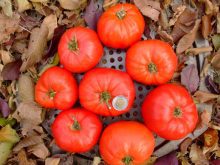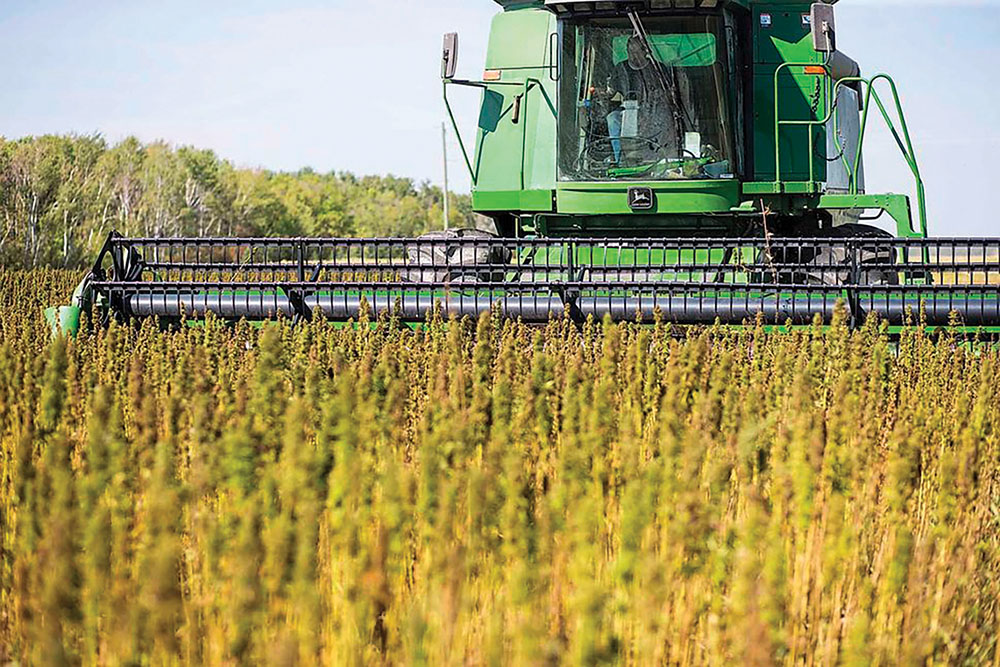The Cannabis Act is slated to take effect October 17th, legalizing recreational cannabis use in Canada. Those legislative changes will also remove many roadblocks to growing hemp and open up new market opportunities, say those in the industry.
The new Act removes hemp from the Controlled Drugs and Substances Act, says Keith Jones, vice president of the Canadian Hemp Trade Alliance. As well, hemp grain and stalks have been exempted from the Cannabis Act altogether.
“So that simplifies things in a whole bunch of ways for us,” says Jones. Jones is general manager and chief financial officer of Rowland Farms. Rowland Farms grows between 4,000 and 6,000 acres of hemp each year.
Read Also

Cancer agency reclassifies another herbicide ‘probably carcinogenic’
The WHO’s cancer research agency has now put atrazine, a herbicide well known to corn growers, in the same potential-hazard category where the agency put glyphosate.
Many of the regulations were really onerous for farmers, says Rowland. For example, farmers had to re-apply for a cultivation licence every year. Under the new legislation, cultivation licences will be good for five years, as long as the grower abides by the licence terms.
- Read more: Hemp growers eye new markets for 2018
While some requirements were just a nuisance, others had a cost. Hemp growers also had to hire a third party to collect random samples of the crop. Those samples were then tested for THC. Rowland says that hemp crops were only grown from certified seed of an approved variety, which didn’t produce more than trace levels of THC. The incoming legislation drops the requirement for third-party testing.
The Canadian Hemp Trade Alliance lists several other changes, such as dropping the prohibition on growing hemp within a kilometre of school grounds and dropping the criminal record check requirement. Farmers will also be able to collect and sell the flowering heads, leaves and branches of the plant.
The new Cannabis Act modernizes the way industrial hemp is regulated, says Jones.
“Most of the changes were overdue, and the Cannabis Act was the impetus for going ahead and making the changes. We’re pleased to see them.”
Using the whole plant
Easing up on the regulations around growing hemp may also open new markets for farmers.
Industrial hemp only produces trace levels of THC, the psychoactive ingredient that can get cannabis users high. But, as a cannabis plant, it likely produces other medicinal components.
Trichomes, which are microscopic hairs on the exterior of the plant’s flowers, produce medicinal components such as cannabidiol (CBD). CBD is produced in the body, but it’s often in short supply, says Natasha Perkins, director of business development at PrairieCann Growth, a medicinal cannabis company.
CBD is effective for treating seizures, inflammation, and pain, she says. But, she cautions, “it’s not a cure-all and you should consult with your doctor before switching your medicine.”
Still, many questions remain about how farmers would harvest the flowers and how those flowers would be valued and graded. Perkins says it would depend on why the processor was purchasing that flower.
“In our case, and probably most cases, it would be the potency of the CBD compound found within that crop.”
Farmers who want to see whether their flowers are worth harvesting would need to check with Health Canada first, says Perkins, to make sure they aren’t violating their cultivation licence. They could then contact the Sask Resource Council about testing for CBD.
“They’ve already set up a testing facility for cannabis, which would work just as well on hemp.”
Jones says Rowland Farms is tracking the hemp-derived CBD market, as well as the fibre market. But for now, the farm remains focused on hemp grain, which goes into products such as hemp hearts.
Rowland Farms has been growing hemp grain since 1998, and it’s an important core business for the farm. Most of their acreage is organic. The farm has long-term supply agreements with most customers instead of yearly contracts.
“But we don’t hemp grow on spec — we know where our crop is going to go,” he says.
Harvesting the whole plant may be easier said than done. Because Rowland Farms focuses on grain, by the time the combines hit the hemp fields, a lot of the flower and leaf material has dropped.
“Any that’s still there is discharged out the back of the combine with the rest of the straw as well,” says Jones.
The hemp industry is looking at several different harvest techniques to capture that material, but it’s not yet clear which will work best in Canada, says Jones. Significant research and development is needed, he says.
Agriculture and Agri-Food Canada has funded three of the Canadian Hemp Trade Alliance’s high priority research projects, and the group will likely be looking for research questions and funding on this topic in the near future, Jones adds.
Perkins forecasts a glut in cannabis supply after legalization, at least at first. Getting value from hemp flowers won’t be as simple as just selling a crop, she says. Instead, farmers will need to partner with someone who will add value through their secondary processing.
It’s not just the flowers that may have more market potential. Jones says that that removing hemp from the Controlled Drugs and Substances Act will make it easier to attract investment into the hemp fibre processing industry. Previous attempts to build fibre-processing plants failed to get enough investment.
For investors, relying on the supply of a material that fell under the Controlled Drugs and Substances Act was unpalatable, says Jones. There was always a risk that government could change legislation, damaging the industry.
Jones is hopeful that investors will invest in processing and kick-start a fibre industry in Canada now. He’d like to see Canadian hemp used for everything from clothing to car parts, an industry that Europe and China are already active in.
“Canada is already the global leader in hemp for food production, based on the great experience with hemp hearts, hemp oil and hemp protein.”
It took 20 years to reach 100,000 acres in hemp production, Jones says. He hopes the modern regulatory framework will be like removing a governor from an engine, allowing the industry to achieve the potential it’s had for a long time.
“I think it’s an exciting time for the hemp industry.”
















